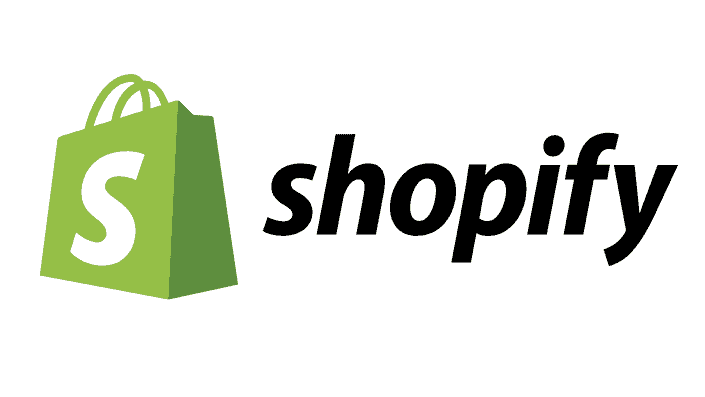Advertising on Google and Facebook can be a game-changer for your Shopify store. These platforms offer powerful tools to target specific audiences, drive traffic, and increase sales.
This comprehensive guide will walk you through the process of creating effective Shopify ads on Google and Facebook, from setting up campaigns to optimizing performance.
1. Introduction to Shopify Advertising
1.1 Why Use Google and Facebook Ads?
- Wide Reach: Google and Facebook have massive user bases, allowing you to reach a large audience.
- Targeting Capabilities: Both platforms offer advanced targeting options to reach specific demographics, interests, and behaviors.
- Performance Tracking: Detailed analytics help measure ad performance and optimize campaigns.
1.2 Benefits of Advertising on Google and Facebook
- Increased Visibility: Ads can boost your store’s visibility and attract potential customers.
- Improved Conversion Rates: Well-targeted social media ads can drive high-quality traffic and improve conversion rates.
- Cost Efficiency: Both platforms offer flexible budgeting options to suit different business needs.
2. Creating Effective Google Ads for Shopify
2.1 Setting Up Google Ads
- Create a Google Ads Account:
- Sign up for a Google Ads account if you don’t have one.
- Link Google Ads to Shopify:
- Use the Google Channel app in Shopify to link your store to Google Ads and streamline campaign management.
- Set Up Conversion Tracking:
- Implement Google Ads conversion tracking to measure the effectiveness of your ads and track key actions like purchases and sign-ups.
2.2 Developing Your Google Ads Campaign
- Keyword Research:
- Use Google Keyword Planner to identify relevant keywords for your products. Focus on both exact match and long-tail keywords.
- Leverage ad extensions like site links, callouts, and structured snippets to offer more information and boost click-through rates.
- Organize Campaigns and Ad Groups: Arrange your campaigns and ad groups according to product categories or objectives.
- Utilize ad extensions such as site links, phone numbers, callout offers, and structured snippets to provide additional information and attract clicks.
2.3 Optimizing Google Ads Performance
- Monitor Metrics:
- Track key metrics such as click-through rate (CTR), total conversion rates, and cost-per-click (CPC).
- A/B Testing:
- Test different ad versions to determine which one performs best. Experiment with headlines, descriptions, and CTAs.
- Adjust Bids and Budget:
- Adjust bids and budget based on performance data to maximize ROI and ensure your ads are competitive.
- Refine Targeting:
- Continuously refine targeting based on user behavior and demographics to improve ad relevance and effectiveness.

3. Creating Effective Facebook Ads for Shopify
3.1 Setting Up Facebook Ads
- Create a Facebook Ads Account:
- Set up a Facebook Business Manager account and create an Ads Manager account.
- Link Facebook to Shopify:
- Use the Facebook Channel app in Shopify to connect your store to Facebook and Google Ads campaigns seamlessly.
- Set Up Facebook Pixel:
- Add the Facebook Pixel to your Shopify store to monitor user interactions, track conversions, and enhance ad performance.
3.2 Developing Your Facebook Ads Campaign
- Define Your Audience:
- Use Facebook’s audience targeting options to reach specific demographics, interests, and behaviors. Consider creating Custom Audiences and Lookalike Audiences.
- Create Eye-Catching Ad Creative:
- Design eye-catching ads with high-quality images or videos. Ensure your ad copy is concise and compelling with a clear CTA.
- Choose Ad Placement:
- Choose where your ads will appear, such as in the Facebook News Feed, Instagram Feed, or Facebook Stories.
- Set Up Campaign Objectives:
- Choose campaign objectives such as traffic, conversions, or engagement based on your goals.
3.3 Optimizing Facebook Ads Performance
- Track Key Metrics:
- Monitor metrics like CTR, conversion rate, and cost-per-acquisition (CPA) to gauge ad performance.
- Run A/B Tests:
- Test different ad variations to find the most effective combination of visuals, copy, and targeting.
- Adjust Budget and Bids:
- Adjust your budget and bids based on performance data to ensure optimal results and ROI.
- Refine Audience Targeting:
- Use insights from ad performance to refine audience targeting and improve ad relevance.
4. Best Practices for Shopify Ads on Google and Facebook
4.1 Align Ads with Store Goals
- Consistency: Ensure that your ad copy and visuals align with your store’s branding and goals.
- Clear CTA: Include a clear CTA in your ads to guide users toward the desired action.
4.2 Monitor and Adjust Regularly
- Regular Analysis: regularly analyze your ads performance and make data-driven decisions to improve results.
- Stay Updated: Keep up with platform changes and updates to leverage new features and strategies.
4.3 Use High-Quality Creative
- Visual Appeal: Invest in high-quality images or videos to capture attention and drive engagement.
- Relevance: Ensure that your ad creative is relevant to your target audience and product offerings.
4.4 Optimize Landing Pages
- User Experience: Ensure that landing pages are optimized for a seamless user experience, with fast load times and clear navigation.
- Consistency: Maintain consistency between your ad content and landing page to reduce bounce rates and increase conversions.
FAQ
Q1: How do I set up Google Ads for my Shopify store?
A1: Create a Google Ads account, link it to Shopify using the Google Channel app, and set up conversion tracking. Conduct keyword research, create ad copy, and organize campaigns and ad groups. Monitor and optimize ads performance based on key metrics you collected.
Q2: What is the Facebook Pixel and how do I use it?
A2: The Facebook Pixel is a tracking tool that allows you to measure ad performance, track user interactions, and optimize campaigns. Install the Facebook Pixel on your Shopify store to track conversions and improve targeting.
Q3: How can I improve the performance of my Google Ads campaigns?
A3: Monitor key metrics like CTR and conversion rate, run A/B tests to find effective ad variations, adjust bids and budgets based on performance, and refine targeting to improve ad relevance.
Q4: What are Custom Audiences on Facebook?
A4: Custom Audiences allow you to target specific users who have interacted with your store or website. You can create Custom Audiences from email lists, website visitors, or app users.
Q5: How do I create effective ad creative for Facebook?
A5: Design eye-catching ads with high-quality images or videos. Write concise and compelling ad copy with a clear CTA. Ensure that your ad creative aligns with your store’s branding and target audience.
Q6: What is the best way to track ad performance on Google and Facebook?
A6: Use Google Ads and Facebook Ads Manager to track key metrics such as CTR, conversion rate, and CPA. Analyze performance data regularly and adjust your campaigns based on insights.
Q7: How often should I review and adjust my ad campaigns?
A7: Regularly review ad performance at least once a week or bi-weekly. Make adjustments based on data insights to optimize campaign performance and achieve your advertising goals.
Q8: Can I use Google and Facebook ads together for my Shopify store?
A8: Yes, using Google and Facebook ads together can create a comprehensive advertising strategy. Each platform offers unique targeting and advertising opportunities, allowing you to reach a broader audience and drive more traffic to your store.
Read Our Full Shopify ReviewBenjamin Shemesh is an ecommerce enthusiast and a digital marketing expert.
He loves surfing the ocean
